Terror, massacre and voodoo in the latest episode of gang violence in Haiti
The murder of more than 180 elderly people in Wharf Jérémie, fueled by accusations of witchcraft, exposes the brutality of gangs, the historical persecution of voodoo and the desperation of a people caught between violence and state neglect
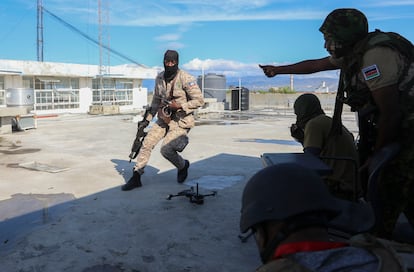
Haiti’s latest massacre, perpetrated last weekend by Micanor Altes, the gang leader also known as Wa Mikanò or Monel Felix, left more than 180 dead, most of them aged over 60, in the Wharf Jérémie neighborhood in Port-au-Prince’s Cité Soleil department, shocking a country accustomed to dealing with violence not only because of the brutality of the attack, but also the motives behind the killings. According to the National Network for the Defense of Human Rights (RNDDH), Altes committed the murders after consulting a voodoo priest, who accused the elders of causing his son’s illness and death through witchcraft.
Today, Wharf Jérémie is a ghostly place. Its narrow streets, once full of life, remain desolate, with burnt-out houses and collapsed roofs marking the landscape. The few residents who dare to go out do so with their eyes fixed on the ground, avoiding exchanging words with strangers. The walls, covered with graffiti exalting the figure of Wa Mikanò, are dotted with bullet holes. The bodies of the victims, brutally hacked to death, were collected on Monday and remain covered by white sheets, an image that gives a glimpse of the scale of the horror.
The Haitian government condemned the violent acts committed in Cité Soleil: “A red line has been crossed, and the State will mobilize all its forces to pursue and annihilate these criminals. Justice will act with exemplary rigor. The Government offers its condolences to the families of the victims,” the Transitional Council wrote on social networks.
The total number of victims has not yet been confirmed with certainty. The RNDDH estimated at least 110 dead, while UN High Commissioner Volker Türk reported that the violence in Altes left at least 184 people dead over the past weekend. According to UN data, by the end of 2024 violent deaths in Haiti will already total nearly 5,000. Pierre Espérance, director of the RNDDH, has condemned the events and urged the government to act.
Voodoo, the pursuit of a controversial influence
Wharf Jérémie remains under siege by the Altes gang, with movement restricted and some residents trapped. This massacre is not their first act of violence linked to religion; in 2021, the gang executed 12 elderly women accused of witchcraft.
Voodoo has been an essential part of Haitian culture for centuries, shaping national identity and daily life. Combining African beliefs, Catholicism, and local traditions, this religion is perceived as a positive spiritual force. However, it has also been associated with conflict and violence. Beyond spirituality, voodoo permeates social relations and manifests itself through rituals, prayers, and dances to connect with spirits in search of protection or guidance.
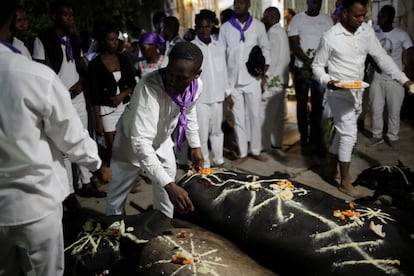
Jean-Baptiste Clérismé, an influential voodoo priest in Cité Soleil, highlights the true purpose of voodoo: “It is a way of connecting with the divine. It is not a means to harm anyone. But, as with all religions, some people misinterpret it.” According to Clérismé, voodoo promotes healing, protection, and harmony with nature, although he admits that, in times of desperation, some use it for revenge, distorting its essence.
The link between voodoo and violence was made clear this weekend when Micanor ordered the massacre at Wharf Jérémie in retaliation for the death of his son. According to Espérance, Micanor consulted a houngan — as priests are known — who accused the residents of the neighborhood of having cast a spell. The director of the RNDDH says that such acts distort the purpose of voodoo and underlined the need to interpret it correctly.
In recent years, voodoo has gained more followers due to gang violence and government inaction. Cecil Elien Isac, a fourth-generation houngan, says his community has grown from eight families to more than 4,000 members in Haiti and overseas. The practice also inspires music, art, literature, and dance, establishing itself as a cultural mainstay. Despite criticism, voodoo remains a reflection of Haitian resilience. As a popular adage goes: “Haiti is 70% Catholic, 30% Protestant, and 100% voodoo.”
This persecution of voodoo practitioners is not new. In April 1986, a woman known as Zanzolite was killed by a mob in Damassins, in southwestern Haiti. According to authorities, the attackers accused her of possessing a poisonous powder following the sudden death of a child in the village. Along with her, four other people were killed and their homes destroyed. These acts were part of a series of attacks against voodoo practitioners following the fall of dictator Jean-Claude Duvalier.
Since February 1986, according to the RNDDHH, at least 1,000 voodoo practitioners, including priests or houngans, have been killed, and hundreds of temples have been looted or destroyed. Voodoo leaders have accused Christian churches of promoting violence by describing the religion as dangerous. Max Beauvoir, a houngan and biochemist, has pointed to government complicity, although military leader Henri Namphy has said that voodoo practitioners should be protected like any other citizen.
In response, voodoo leaders organized a historic meeting in Soucri in 1991 with more than 200 participants, including priests and social scientists. This meeting sought to defend Haiti's African heritage and form a national organization to protect voodoo. It also proposed repealing a law banning its ceremonies and creating a radio station and a healing clinic.
‘Bwa kale’: the resistance of the Haitian people
The new massacre has rekindled fear in Port-au-Prince, which has seen a surge in violence since November in a city where gangs have wreaked havoc but where the self-defense movement known as Bwa Kale has gained strength. “The population must arm itself with machetes and continue to defend itself in the framework of legitimate defense,” said Espérance. He also stressed the importance of cooperation between the population and law enforcement, citing a successful example from November 19, when a joint action by police and citizens resulted in the capture of 96 criminals in Port-au-Prince.
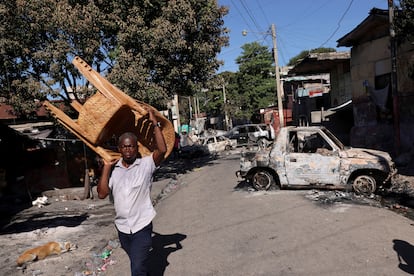
For Michel Soukar, a Haitian historian and analyst, the Bwa Kale movement reflects how the Haitian people defend themselves against the lack of institutional support and police corruption. “When you have a national police force corroded by corruption, the people realize that they are abandoned and they defend themselves as best they can,” he said in an interview with EL PAÍS. Soukar points out that citizens cannot distinguish between police and bandits because of the links between the authorities and gangs.
Both Espérance's and Soukar's statements reflect the growing desperation in Haiti, where corruption and gang violence are forcing people to take justice into their own hands.
Sign up for our weekly newsletter to get more English-language news coverage from EL PAÍS USA Edition
Tu suscripción se está usando en otro dispositivo
¿Quieres añadir otro usuario a tu suscripción?
Si continúas leyendo en este dispositivo, no se podrá leer en el otro.
FlechaTu suscripción se está usando en otro dispositivo y solo puedes acceder a EL PAÍS desde un dispositivo a la vez.
Si quieres compartir tu cuenta, cambia tu suscripción a la modalidad Premium, así podrás añadir otro usuario. Cada uno accederá con su propia cuenta de email, lo que os permitirá personalizar vuestra experiencia en EL PAÍS.
¿Tienes una suscripción de empresa? Accede aquí para contratar más cuentas.
En el caso de no saber quién está usando tu cuenta, te recomendamos cambiar tu contraseña aquí.
Si decides continuar compartiendo tu cuenta, este mensaje se mostrará en tu dispositivo y en el de la otra persona que está usando tu cuenta de forma indefinida, afectando a tu experiencia de lectura. Puedes consultar aquí los términos y condiciones de la suscripción digital.
More information
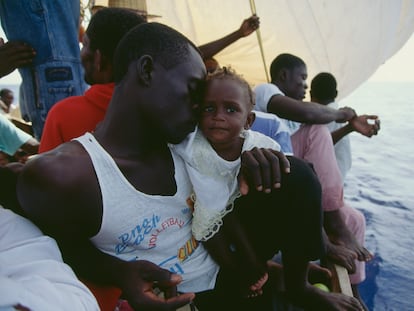
Haiti’s silent exodus: Driven into the the sea in search of hope
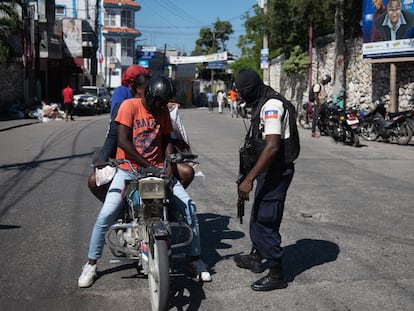
From bloody attacks to donations in schools: How gangs plan to gain power in Haiti
Archived In
Últimas noticias
The relentless struggle between factions deepens the Sinaloa war: bodies in coolers and a surge in homicides
‘Doctor Death’, the journalist who has witnessed 105 executions in Florida
Being trans or gay in a migrant detention center: ‘They call me faggot, queer, bitch’
The metaverse, four years later: Is it finished or just at a standstill?
Most viewed
- The low-cost creative revolution: How technology is making art accessible to everyone
- Christian Louboutin: ‘Young people don’t want to be like their parents. And if their parents wear sneakers, they’re going to look for something else’
- All the effects of gentrification in one corner of Mexico’s Colonia Roma
- Liset Menéndez de la Prida, neuroscientist: ‘It’s not normal to constantly seek pleasure; it’s important to be bored, to be calm’
- Christmas loses its festive spirit: ICE fears cast shadow over religious celebrations








































